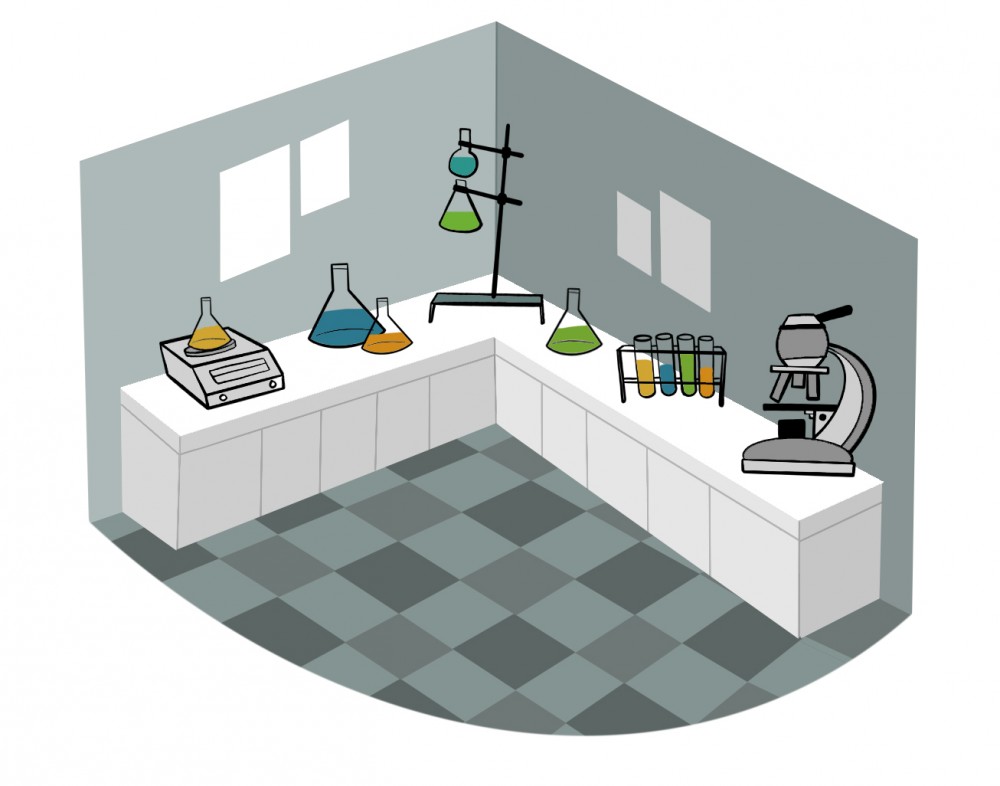In light of outdated classrooms and labs, the University of Minnesota Department of Chemistry is requesting building renovations and improved lab space.
The nearly $100 million plan, which is part of the University’s proposed capital request for next year, includes a variety of new spaces in Fraser Hall that promote a more modern style of teaching chemistry. Current labs in the chemistry department lack collaborative opportunities and places where students can safely work with technology, according to department members. With roughly one third of students who graduate at the University taking classes in the chemistry department, many students will be taught in these labs.
“It’s very similar to the same way it’s been for the last 100 years,” David Blank, head of the chemistry department, said about teaching in the current chemistry labs.
The rooms reflect this older style, he said, where students typically work by themselves.
“You’re not communicating with your TA, you’re not communicating with the people around you, you’re just following a set of instructions,” Blank said.
Instead, instructors want students answering new questions and working to solve new problems rather than working on step-by-step lessons, Blank said.
“We want communication, we want people working in teams,” he said. “These are the skills those students don’t have, and these are the skills those students need.”
While the proposed plan is subject to change, the goal of the project remains the same.
“If they’re all going to be working in these laboratories, this will give them another space to work together as a team,” Blank said.
Michelle Driessen, a general chemistry director since 2007 and University professor, agreed that the new labs will give students collaborative opportunities that didn’t exist before.
“I don’t think I could design a worse space to do what we do,” she said of the current space, where she teaches overfilled classes with more than 100 students in each class.
The current spaces are cramped with no room to sit and aren’t accessible for handicapped students or students on crutches, she said. To accommodate them, they have to set aside a specific area for them to work.
“Our spaces right now are not conducive to four people brainstorming and working together and doing projects,” Driessen said. Students can’t present or interact easily in the rooms they’re given, she said.
There are 132 majors at the University which require courses that use these labs, Driessen said.
“It’s an important experience for not just our CSE students, but for all our students on campus,” Driessen said.
John Ward, professor and College of Biological Sciences associate dean for undergraduate education, said the new lab space would have a big impact on his students and across campus.
“If the University is increasing the number of students and staff, then they’ll be increasing the number of students taking chemistry,” Ward said.
The department needs the appropriate space to accommodate these students, Ward said.
Ascan Koerner, professor and College of Liberal Arts associate dean for undergraduate education, said, “We really hope that this new way of teaching, this new building, really helps our students become more engaged in chemistry.”
The current facilities could possibly take away from students’ interest in chemistry, he said, and that goes beyond just CLA students.
“It’s important for all students at the University of Minnesota. Everyone needs to take a chemistry program, right?” Koerner said.
Some majors in the College of Food, Agriculture and Natural Resource Sciences require as many as six semesters of chemistry classes, said Michael White, CFANS professor and associate dean for academic programs and faculty affairs.
Because some of the classes are overfilled, White said students struggle to get into classes they need to graduate.
“If you miss or skip a semester on the way in,” White said, “you just put yourself in real jeopardy, as a student, to graduate on time.”
These new chemistry spaces could stop this from happening, he said.
Chad Fleischhacker, a second-year student and biochemistry major, said he didn’t like how many sections were crammed into one lab space. He was distracted by other groups, he said.
Each teaching assistant was also in charge of 30 students, he said, which made it harder to ask questions.
“Half the time we don’t understand what we’re doing, we’re just getting the work done,” Fleischhacker said.








